Tree Trail
-
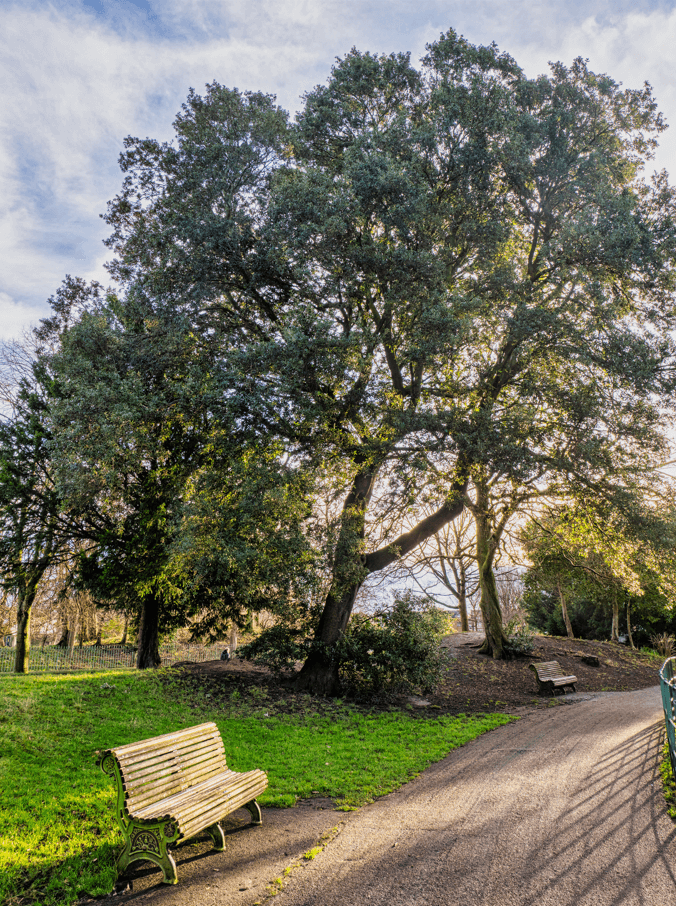
With their dark green, glossy leaves, the Holm Oak can be tricky to spot! This species’ strong resemblance to Holly has led to both its common and scientific name: Holm is an ancient name for Holly, and Quercus Ilex means Holly Oak). Just like Holly, the Holm Oak is evergreen. Tell-tale signs that you’re under a Holm Oak during autumn are the small acorns you find around the base while the tree is still in full leaf, unlike its deciduous, lobe-leaved cousins, the English Oak and Turkey Oak, whose leaves turn brown and drop every Autumn.
-
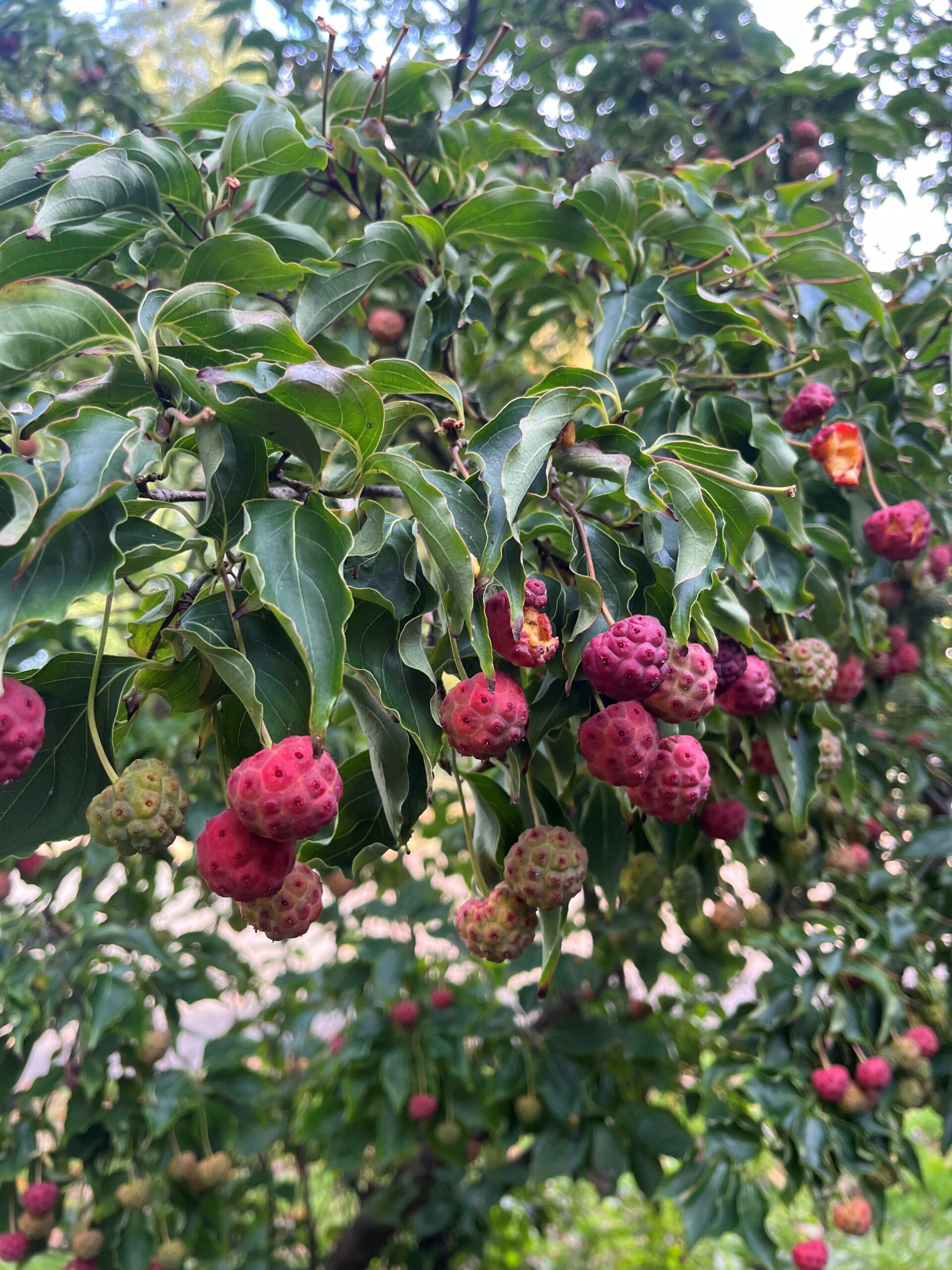
The Korean Dogwood is a striking tree, especially when in bloom. What appear to be four white petals are in fact modified leaves called bracts, which surround clusters of tiny yellow-green flowers. Its fruit is an edible berry-like cluster which is sometimes used to make wine. The tree takes about 5 to 7 years to start flowering, rewarding patience with beautiful displays.
-
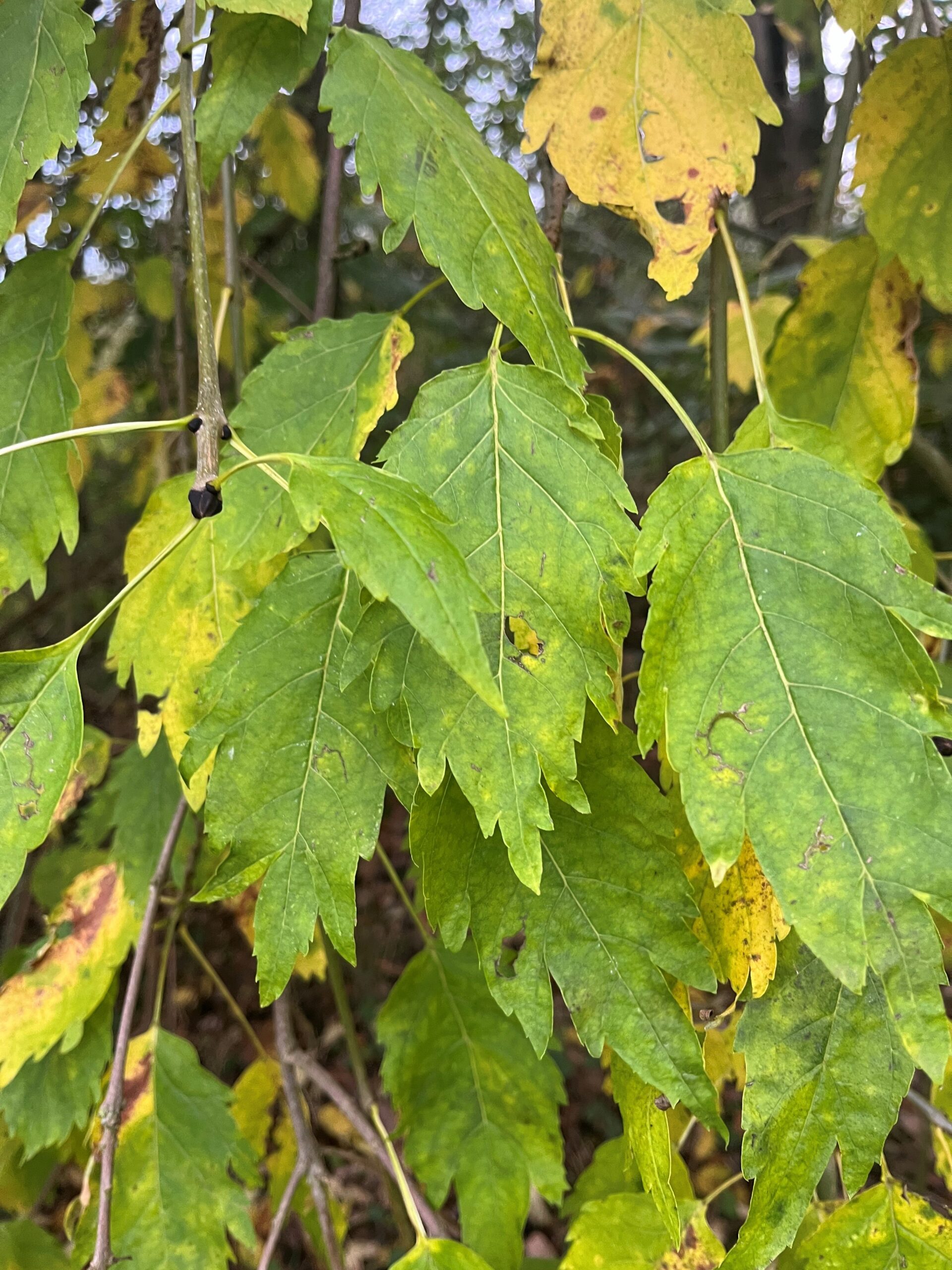
This Ash tree is unusual because it has simple leaves rather than compound leaves like most Ash trees have.
-
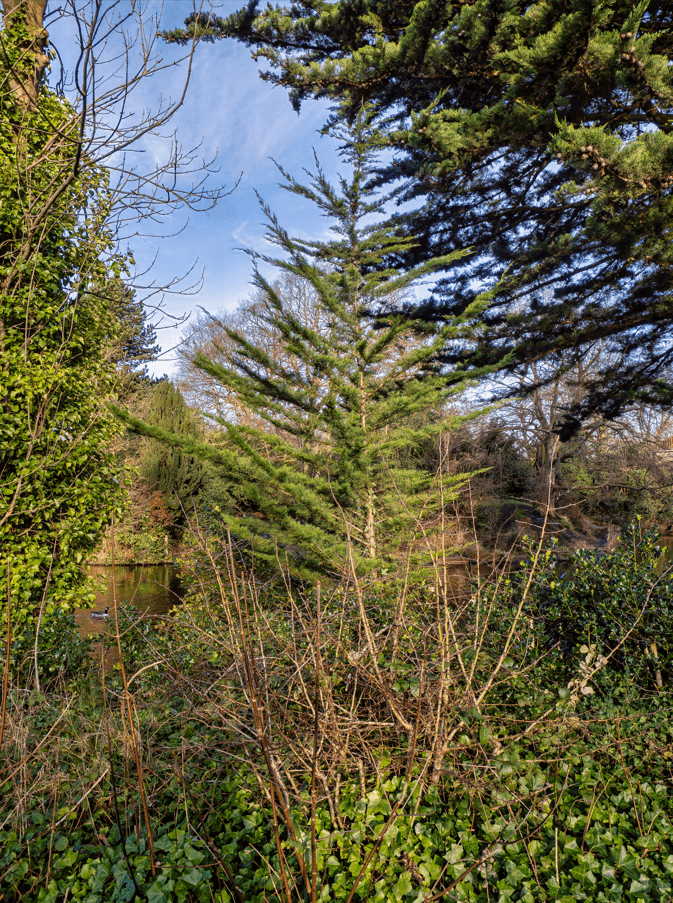
Originally found in just two small populations along the Californian coast, this conifer was introduced to Britain in the 1800’s. Its shoots are covered in small, overlapping leaves that release a lemon scent when crushed. Its smooth, rounded cones are another distinctive feature. The Monterey Cypress thrives in coastal conditions, and in its native land often grows angled because of strong winds.
-
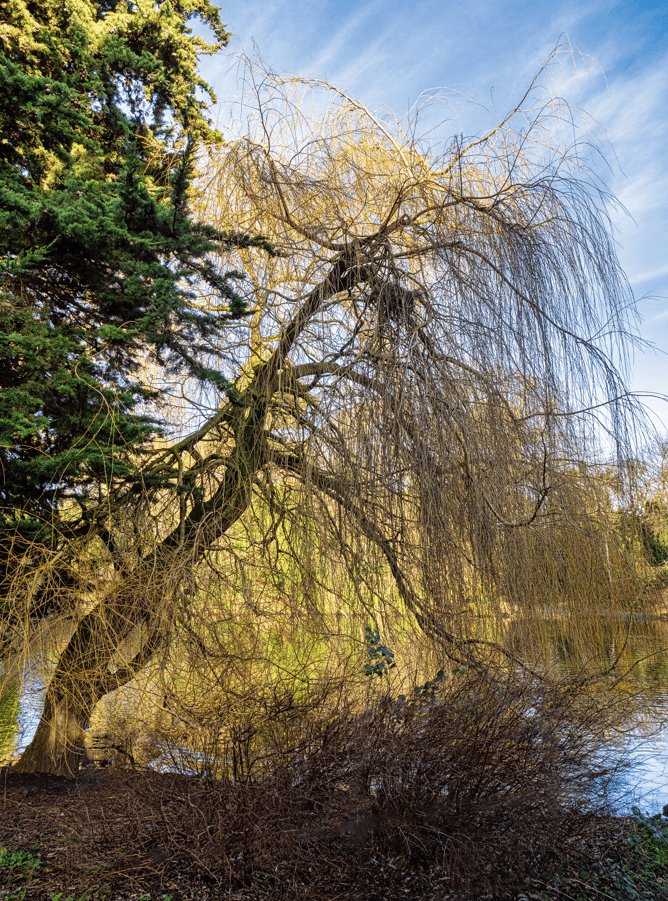
Famous for its drooping branches, the weeping willow is native to northern China but has spread worldwide due to its ornamental appeal. The name “weeping” comes from the way rainwater drips from its leaves, as if the tree is crying. Willows are closely related to poplars and prefer moist soils, often growing near water bodies.
-
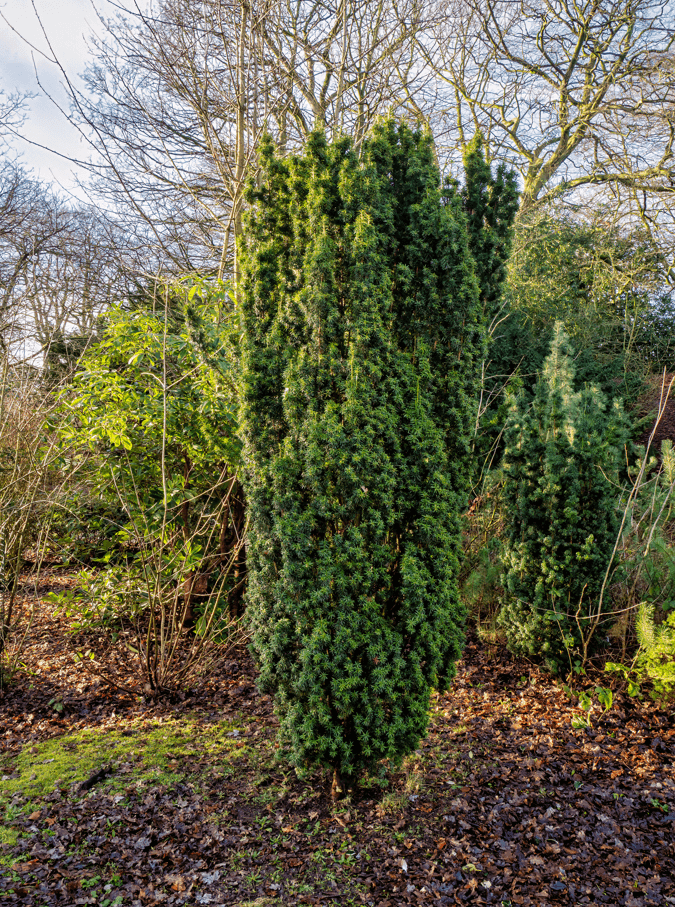
We have two different types of Yew in the park but how do we tell the difference? All Irish Yews trace their origins back to a single tree discovered in County Fermanagh in the 1700s. Unlike its English relative, the Irish Yew grows in a neat, columnar form, with branches pointing upwards like flames. It shares the same toxic seeds as the English Yew and is also a long-lived tree.
-
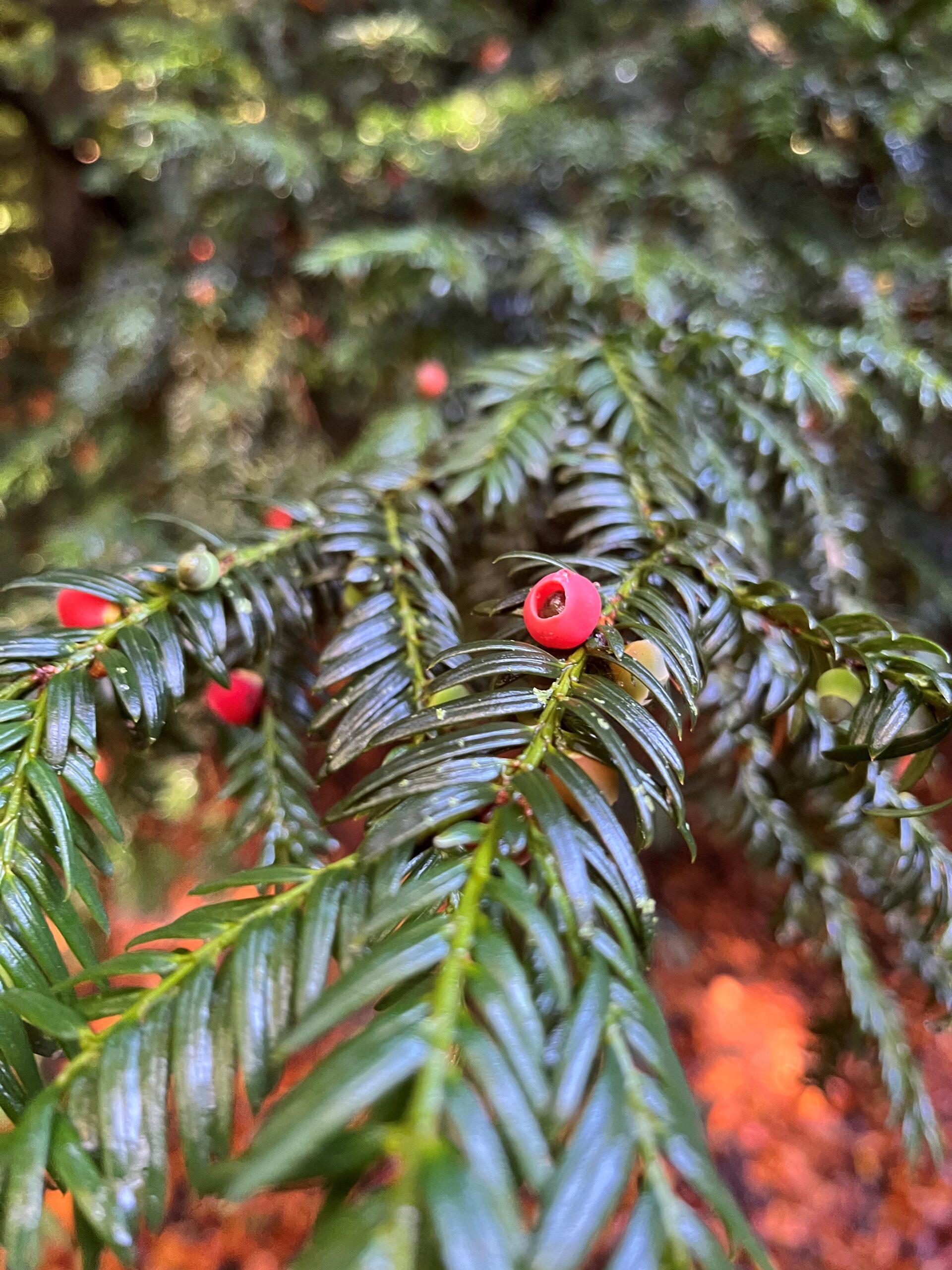
We have two different types of Yew in the park but how do we tell the difference? One of Europe’s longest-living trees, the English Yew can live for over 2,000 years. While its bright red berries (called arils) attract birds, the seeds inside are toxic to humans and most animals. Despite being classed as coniferous (cone-bearing), the Yew doesn’t produce cones but has toxic, berry-like fruit instead.
-
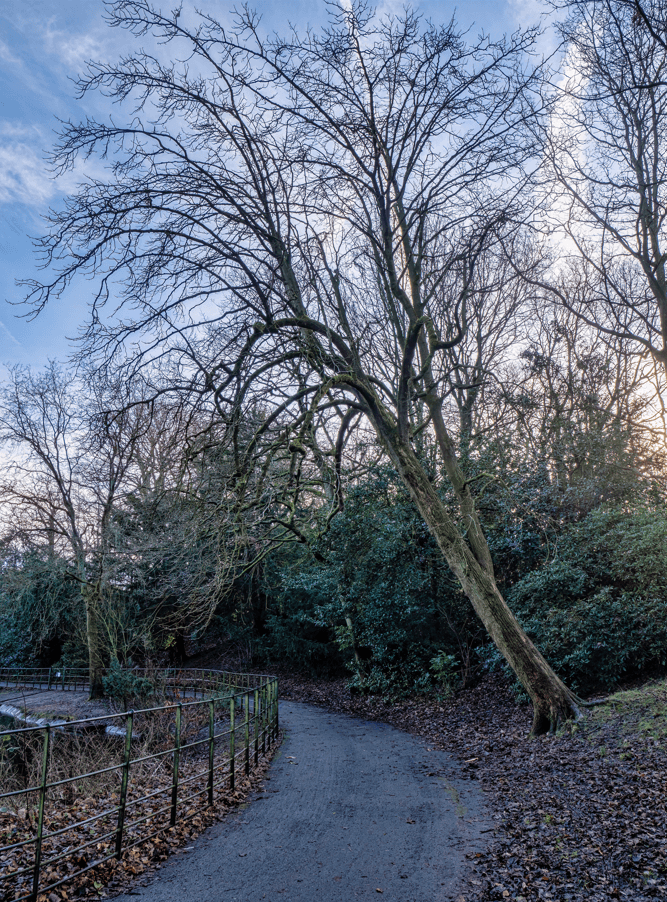
Despite its name, you won’t find actual cucumbers on the Cucumber Tree! This species of magnolia gets its name from the unripe fruits it produces which resemble cucumbers before they ripen and turn red. Inconspicuous yellow/green flowers bloom in late spring to early summer. This species is native to Canada and parts of Northern America.
-
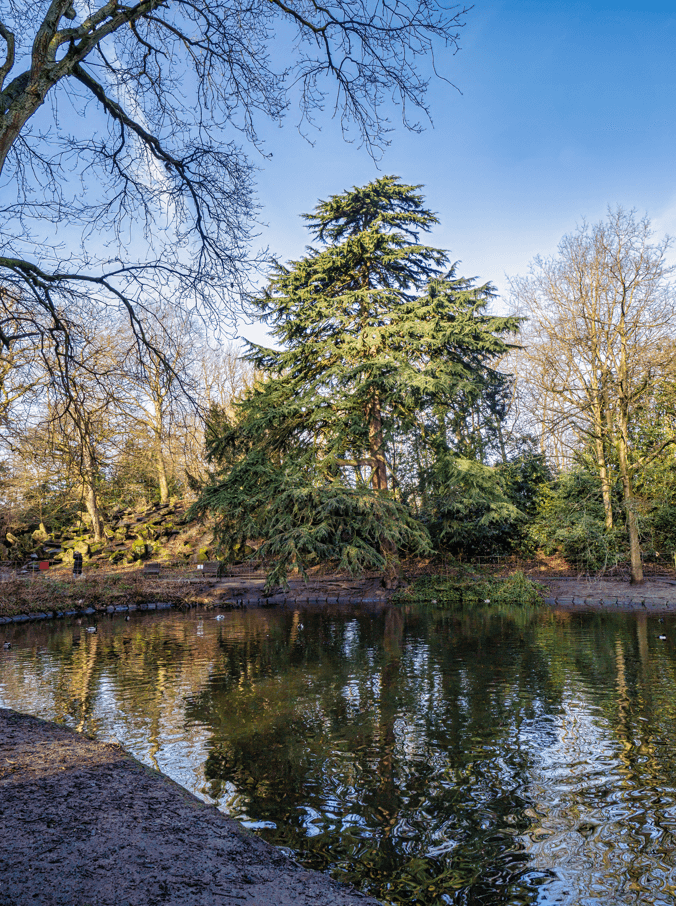
This is one of the oldest trees the park, imported during its creation. Native to the western Himalayas, the Deodar Cedar (also known as the Himalayan Cedar) is a tall, majestic conifer. This evergreen tree has soft, bluish-green needles and produces barrel-shaped cones. Known for its durability, Deodar wood is highly resistant to decay and was historically used in temple construction.
-
This tree no longer exists.
-
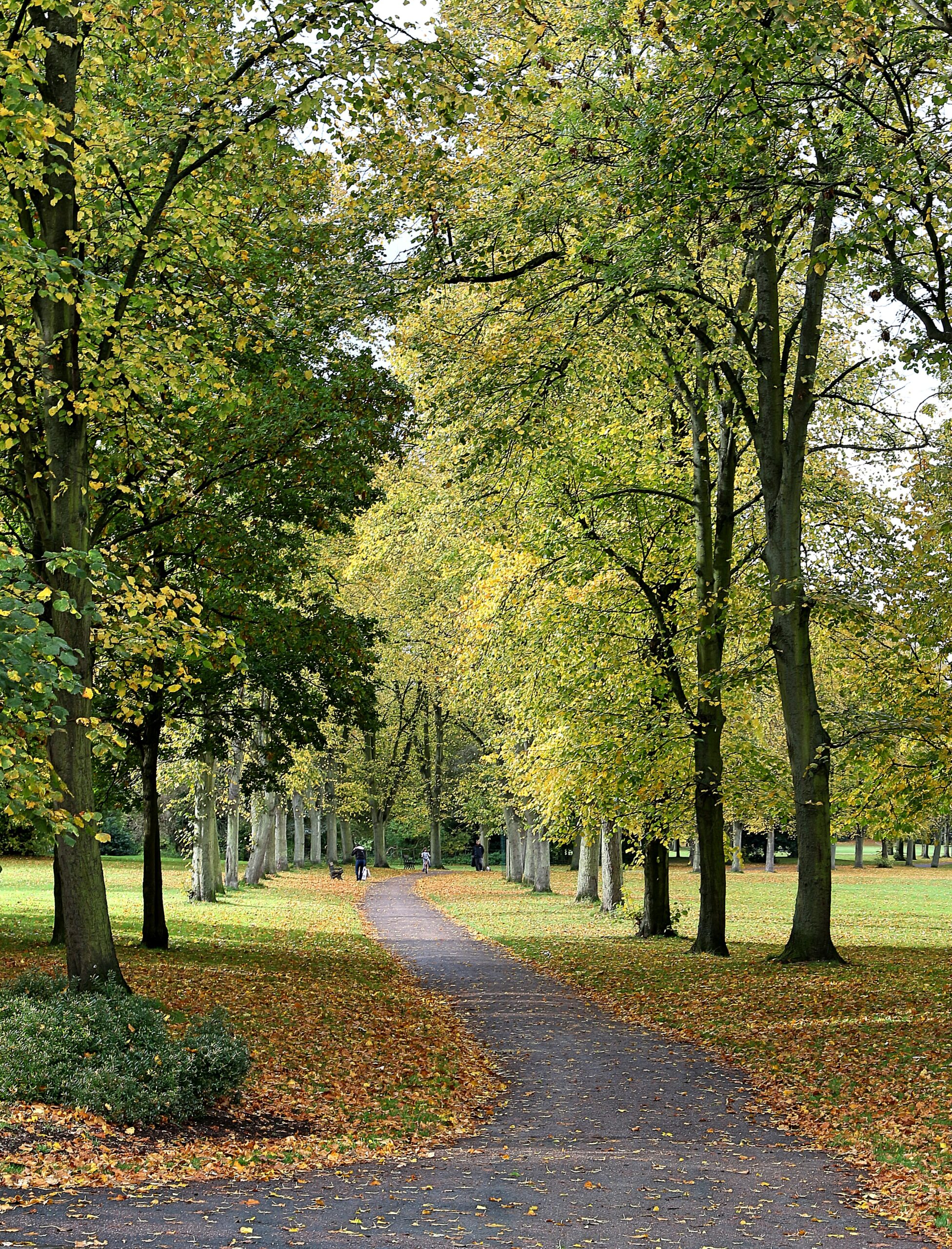
This avenue of Lime trees was not in the original plans for the park. It was planted by local school children in 1953 to commemorate the Queen’s coronation and is now known as the ‘Coronation Walk’. The trees are following a footpath that had existed since the early 1930s.
-
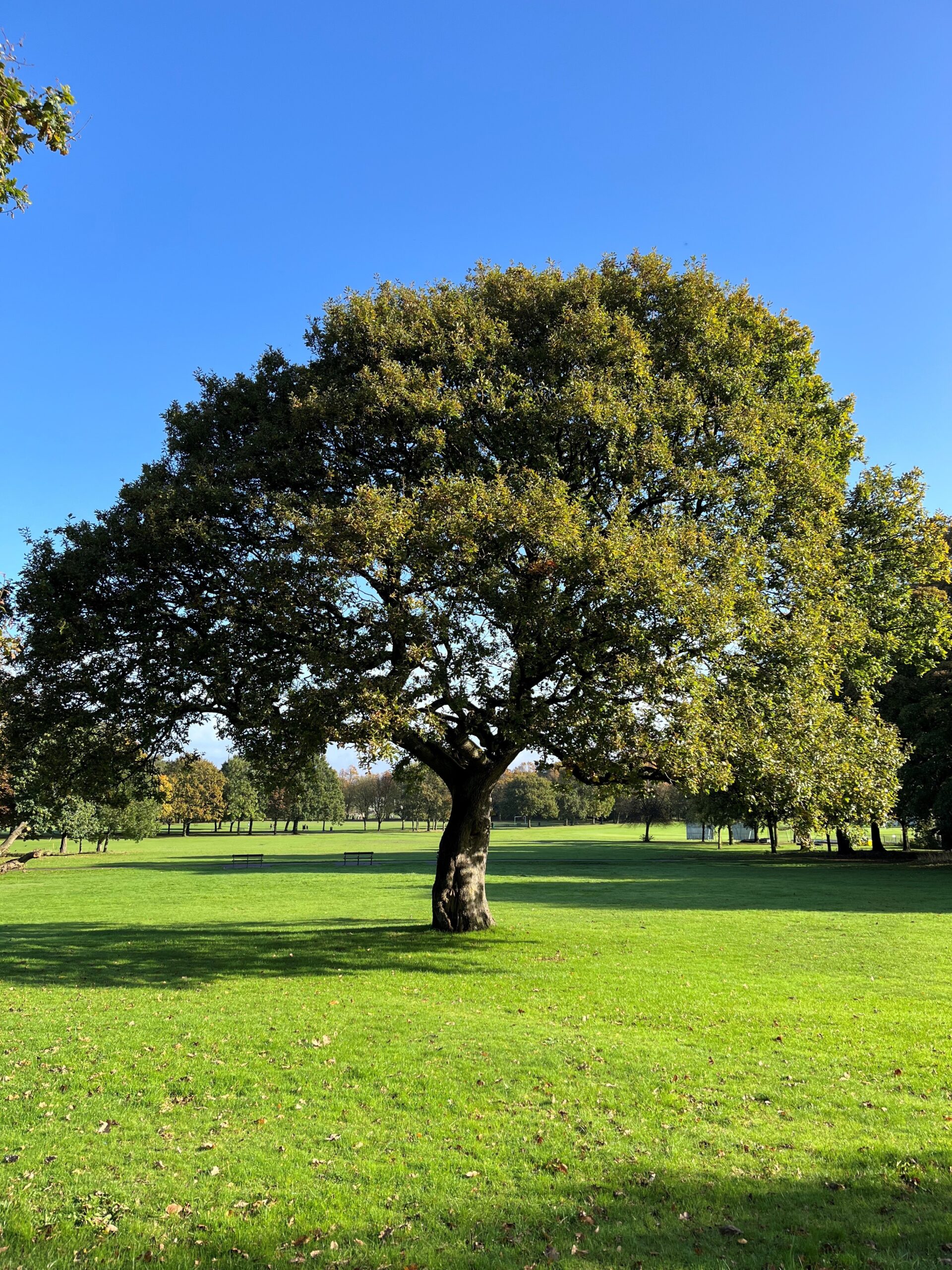
Possibly the oldest tree in the park, this oak dates to ~1760 and was likely part of a field boundary before the park was created. English Oak supports more wildlife than any other tree species in the UK, providing food and shelter to countless insects, birds, and mammals. Its acorns are a vital food source for woodland creatures (you might catch jays and squirrels burying them around the park in autumn) and it can live up to 1,000 years.
-
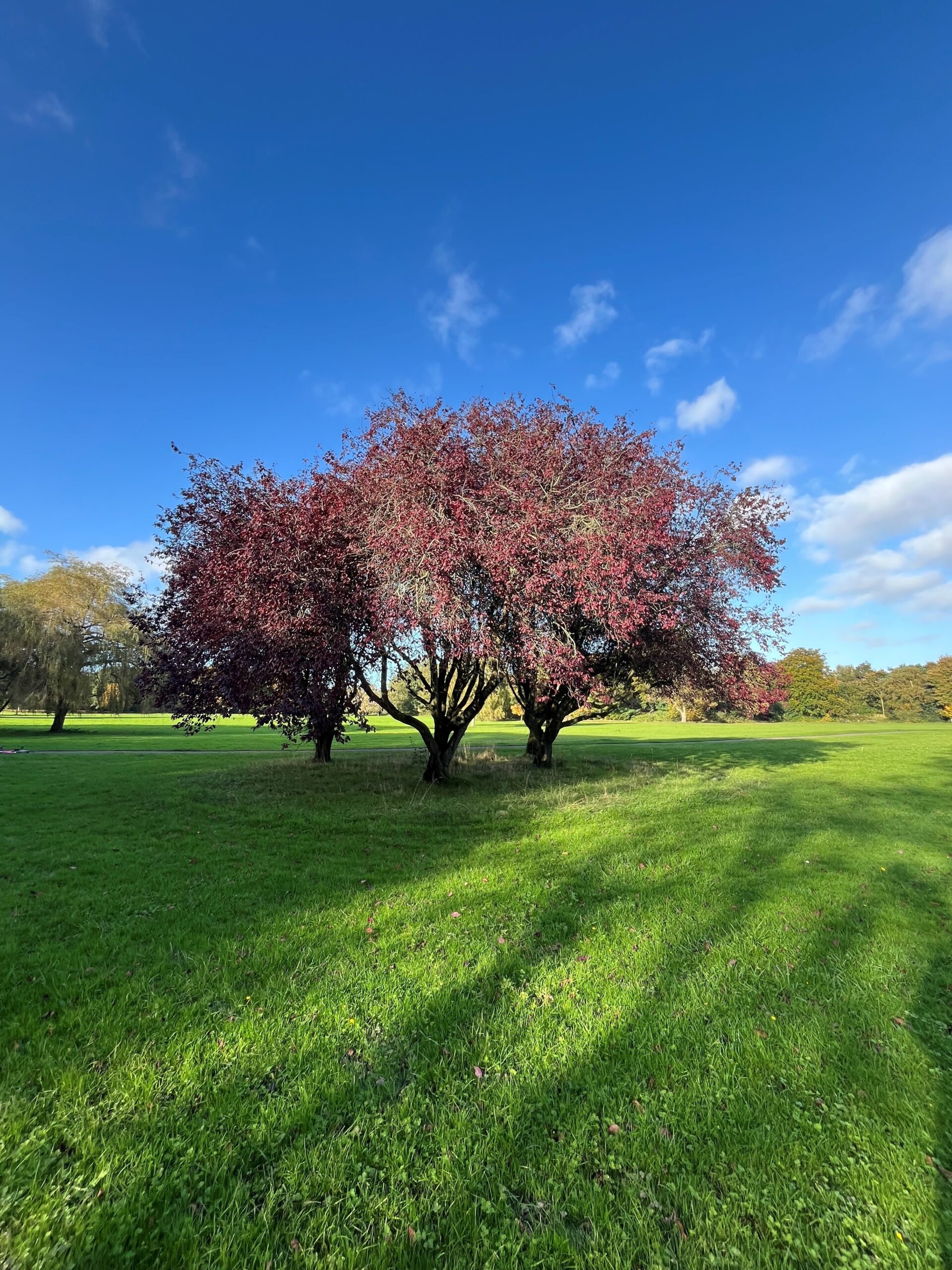 The Purple Cherry Plum is smothered in white to very pale pink flowers in the spring and cloaked in striking purple foliage throughout the summer. Upon close inspection, you’ll find that the underside of its leaves has a soft, downy texture along the veins.
The Purple Cherry Plum is smothered in white to very pale pink flowers in the spring and cloaked in striking purple foliage throughout the summer. Upon close inspection, you’ll find that the underside of its leaves has a soft, downy texture along the veins. -

The Purple Ash, Fraxinus americana ‘Autumn Purple’, is a variant of White Ash that is well-known for its brilliant purple and red autumn foliage. Ash trees are easy to identify in winter because of their unique black or grey buds, which resemble the ash from a fire. They have compound pinnate leaves, meaning each leaf is made up of several smaller leaflets arranged along a central stem.
-
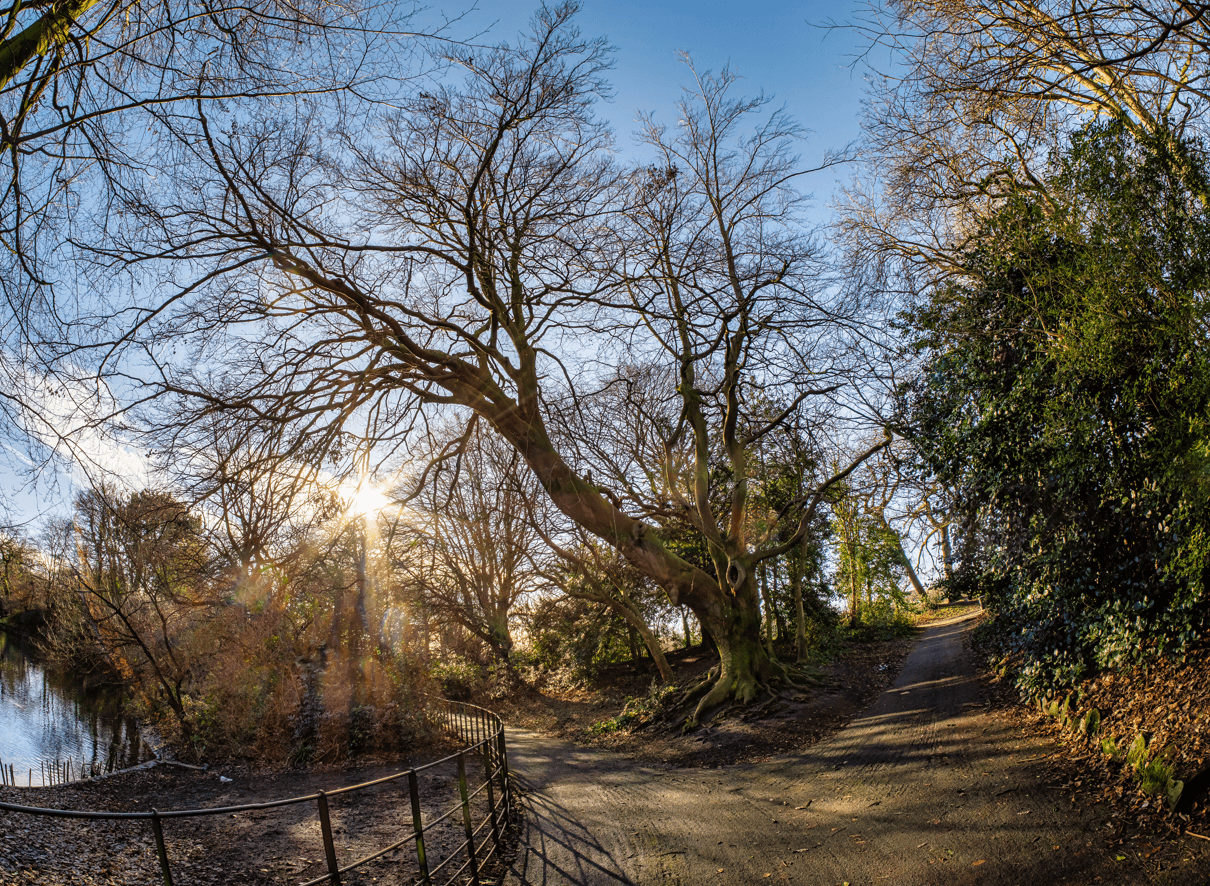
This magnificent beech tree is a beautiful example of the species, known for its smooth grey bark and simple, oval-shaped leaves. Unlike the rough or rugged bark of oaks or the scaly appearance of sycamores, the beech’s bark remains smooth even in maturity. In winter, its slender, pointed buds (resembling tiny toothpicks!) make the beech easy to identify.
-
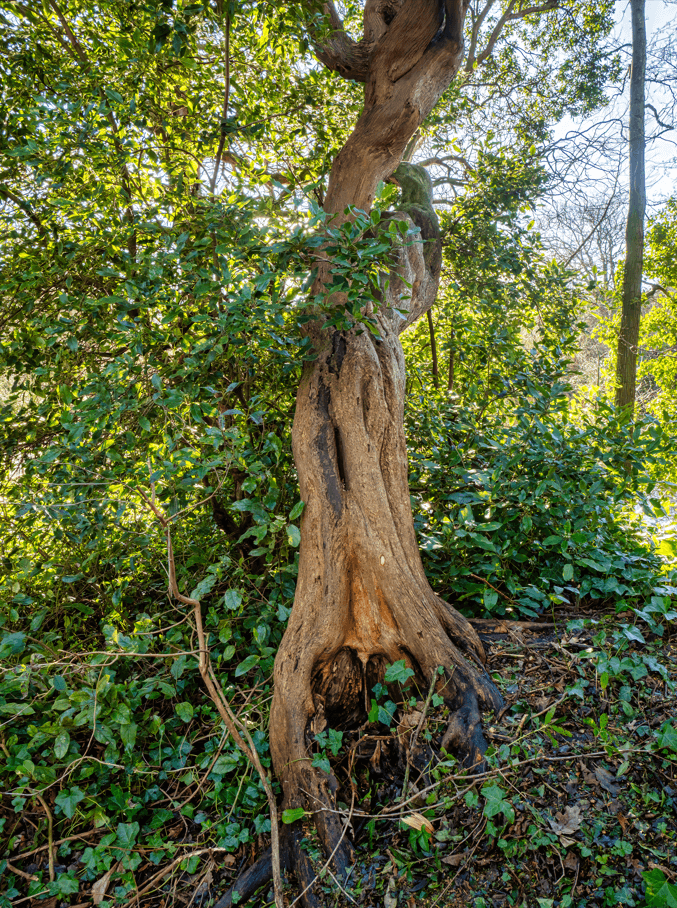
This relatively small tree is native to the Mediterranean Basin and Western Europe, including parts of Ireland where it is thought to have been introduced by Spanish miners around 4,000 years ago! Its grey-red trunk and twisted limbs support a dense canopy of dark green leaves. Although not related to true strawberries, the fruit of the Strawberry Tree are edible, but as its Latin name suggests – unedo means ‘I eat (only) one’ – they are not very tasty!
-
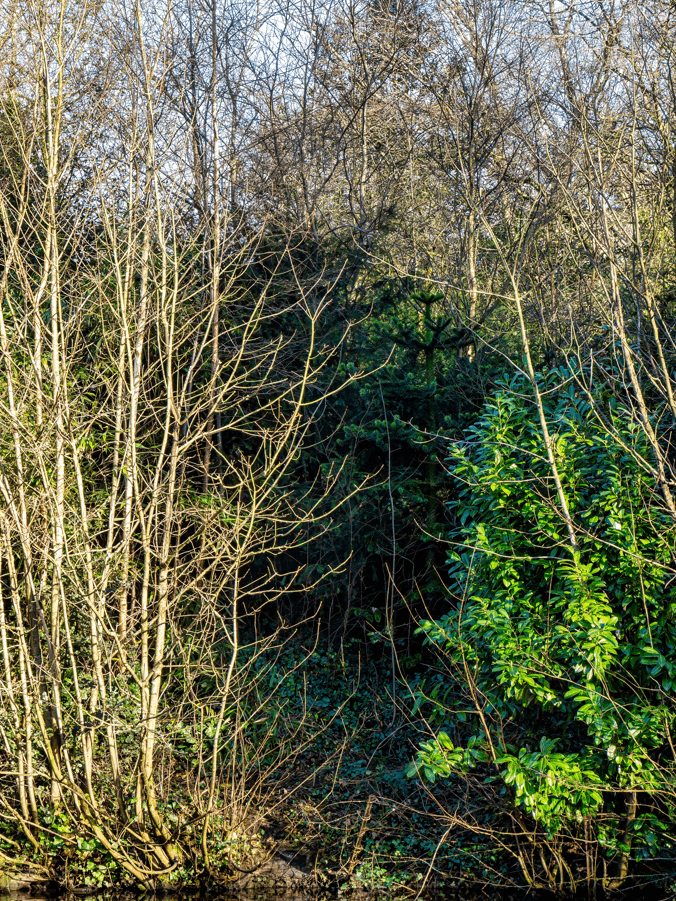
This striking conifer is native to Chile and Argentina and was introduced to the UK in the late 18th century. Its name comes from the idea that a monkey would be puzzled trying to climb its spiky branches! This tree is slow growing and can live for hundreds of years. Its sharp leaves are an adaptation to deter herbivores.
-
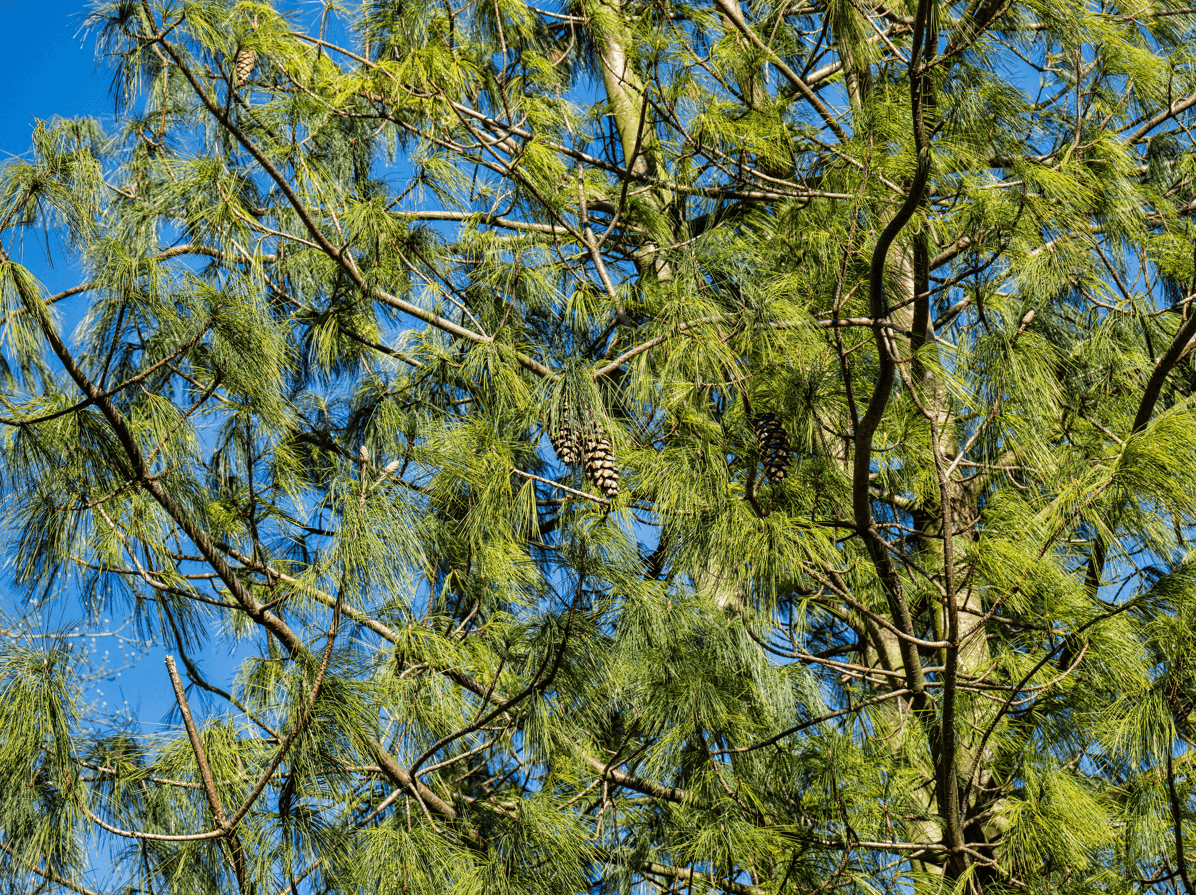
This beautiful white pine has long, slender needles which are grouped in clusters, (typically in pairs or sets of five) which distinguishes pines from other conifers. The tree produces both large female cones and smaller male cones, a characteristic of conifers being monoecious (having both reproductive structures on the same tree). If you look closely at the needles, you’ll notice their three-edged shape, another feature that makes this species easy to identify.
-
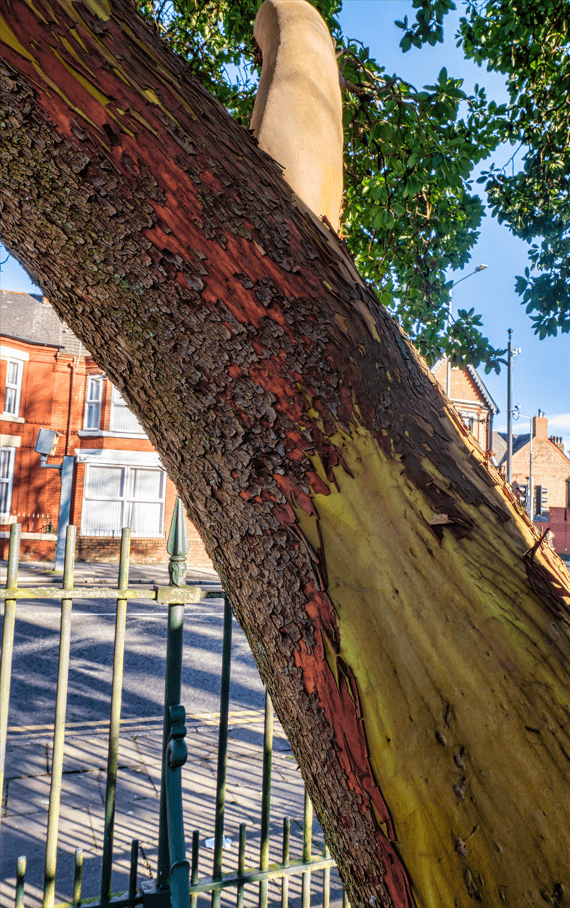
This tree is a native of Cyprus and Greece. While it is similar in appearance to the Strawberry tree, you can easily tell this hybrid variety by its striking bark: the Hybrid Strawberry tree is in displays beautiful and vibrant ruby red tones, which peel peeling away to reveal subtle pinks and creams.
